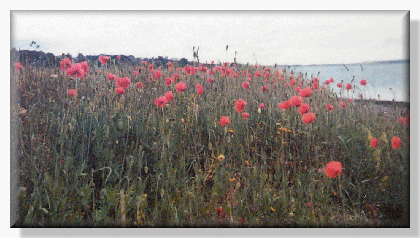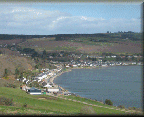Potatoes
The first written record of potatoes in Scotland is by John Reid, gardener to Sir George Mackenzie of Rosehaugh in 1683 in his book “The Scots Gard’ner”. Reid recommends its use as a garden vegetable and gave instructions for its cultivation.
It remained a garden vegetable for some time and the first field crop was grown about 50 years later.
In the farm rent book of 1763 for the local laird, Sir Roderick Mackenzie, oats and bear (barley) are mentioned, but not potatoes.
However when the First Statistical Account was published in 1793, thirty years later, poatoes were a common crop in farm and garden in Avoch. In Rosemarkie there are records of “large quantities of potatoes of a very free and sweet quality” being produced.
The photo below shows Willie Whyte (Crosshill), Andrew Ross and others “dressing” potatoes. In this process they were first sorted out into seed and ware and then the ware potatoes were dressed again to remove any damaged tubers which were used for animal feed.



The potato gatherers – at Gallowhill, late 1950s
Turnips
In 1777 a Scottish farmer’s son sent home some turnip seed from Sweden, and these gave rise to the name “swedes”, which with yellow neeps, have had a great impact by providing food for livestock in winter.
Turnips were not grown in Avoch parish in 1793 but by 1840 they were very common.
Late June was the time for the “how” – a job guaranteed to give sore shoulders.
Selecting the best seedlings and removing the others was a skill that was made more difficult on stony fields or when weeds were common.

Whins
Mr Gordon, farmer at Udale, sowed whin seed on some of his poorest land in the 1870s. The plans were cut annually by a mower and crushed by a whin mill for feeding to cattle.
After a few years, when the land was cleared and sown with oats, yields near the average were obtained.

Poppies
These and other wild flowers which once grew near the edges of fields in the Black Isle have now become rarer.

